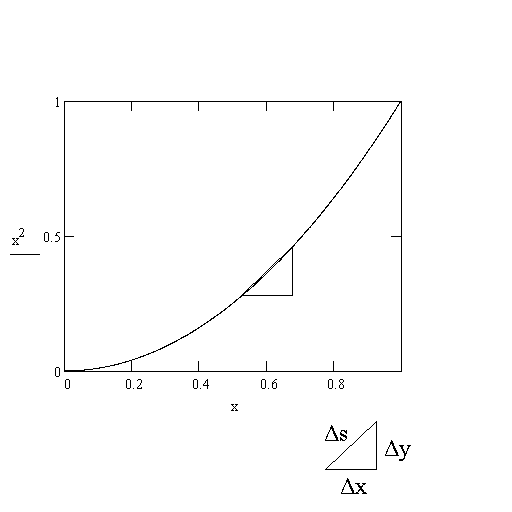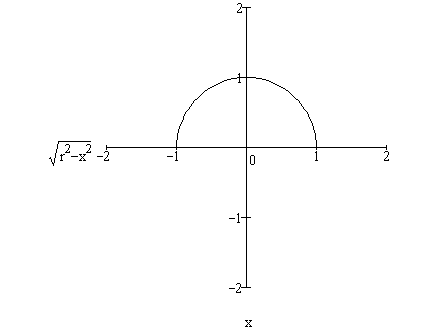| Have you found an error or do you want to add more
information to these pages? You can contact me at the bottom of the home page. |

| Δs1 | + | Δs2 | + | Δs3 | + ... = | Δs1 + Δs2 + Δs3 + ... |
| Δx | Δx | Δx | Δx |
| ∑ n |
Δsn Δx |
Δx = Δsn |
| (Δs)2 | ≈ 1 + | (Δy)2 | |
| (Δx)2 | (Δx)2 | so now I can take the square root of both sides |
| Δs | ≈ | √( | 1 + | (Δy)2 | ) |
| Δx | (Δx)2 |
| Δs Δx |
≈ √(1 + (Δy / Δx)2) |
| Line length between a and b = | ∫ | b | √(1 + (dy / dx)2) dx |
| a |
| lim | ∑ yi•Δx = ∫ y dx |
| Δx → 0 |
| Δs Δx |
≈ √(1 + (Δy / Δx)2) |
| ds dx |
≈ √(1 + (dy / dx)2) |
| Line length between a and b = | ∫ | b | √(1 + (dy / dx)2) dx |
| a |

| Line length = | ∫ | b | √(1 + (dy / dx)2) dx |
| a |
| Circumference = 2 | ∫ | r | √(1 + (dy / dx)2) dx |
| -r |
| and if b(x) = √a(x), then the gradient is b'(x) = | -1 | = | -1 |
| 2√(a(x)) | 2√(r2 - x2) |
| dy | = -2x | -1 | = | x |
| dx | 2√(r2 - x2) | √(r2 - x2) |
| Circumference = 2 | ∫ | r | √(1 + (dy / dx)2) dx |
| -r |
| x2 |
| r2 - x2 |
| 1 + (dy / dx)2 = | r2 |
| r2 - x2 |
| Circumference = 2r | ∫ | r | 1 | dx = 2r(arcsin (1) - arcsin(-1) ) |
| -r | r2 - x2 |
| Have you found an error or do you want to add more
information to these pages? You can contact me at the bottom of the home page. |